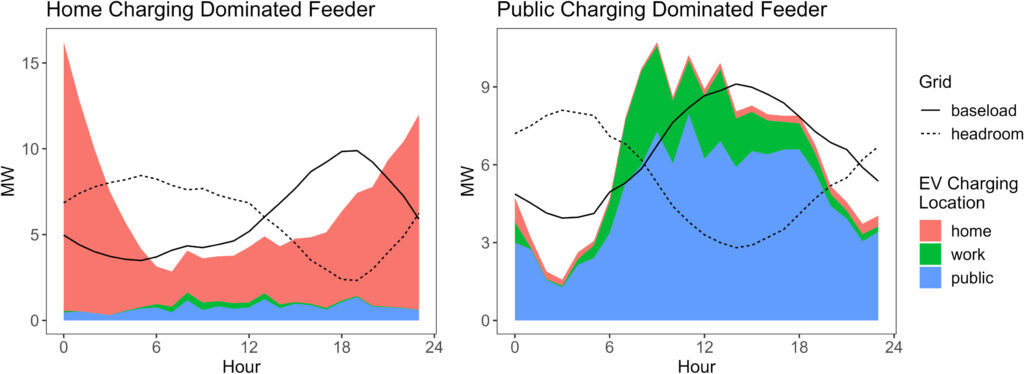Electric vehicles don’t just cut tailpipe emissions, they drive infrastructure change
New study shows that as more people switch to EVs, it spurs investment in renewable energy—making the grid greener across a wide range of scenarios, regardless of policy shifts.

September 23, 2025
Getting more electric cars on the road will result in a greener electric grid because increased electricity demand for vehicle charging spurs investments in renewable energy, according to a new study.
It has long been clear that the climate benefits of EVs depend on a clean electric grid. The new study suggests that this is all but inevitable, as EV adoption itself makes the electric grid cleaner.
The findings hold across a variety of policy scenarios and EV adoption rates, providing confidence in the result as the Trump Administration seeks to roll back Biden-era policies to reduce greenhouse gas emissions and develop clean energy systems.
Previous studies of EV effects on the power system have only looked at scenarios with a few EVs on the road, focused on the more emissions-intensive electric grid of the past, or did not account for the way that increased electricity demand spurs new power plant construction.
In the new study, researchers modeled how plug-in EV adoption in the United States will shape the national electricity grid’s infrastructure, operations, and emissions through 2050.
They analyzed 5 different EV adoption scenarios, ranging from a pessimistic case that assumes no EV-related policy is in place and results in 16% of vehicles on the road being electric in 2050; to a scenario based on the Inflation Reduction Act (IRA), the Biden Administration’s signature climate legislation, with 36% of cars on the road electric in 2050; to a scenario in line with reaching net zero greenhouse gas emissions by 2050 yielding 86% electric vehicle stock.
Should your next car be electric—or no car at all?
Boosting EV adoption rates triggers investment in more power generating capacity, especially wind, solar, and natural gas, as well as battery storage, the researchers report in the Proceedings of the National Academy of Sciences.
In 2026, the emissions from charging additional EVs are basically equivalent to what the emissions from fueling additional gasoline cars would be. But by 2032, “the increases in grid emissions per additional EV are an order of magnitude lower than displaced gasoline vehicle combustion emissions,” the researchers write.
Green energy grows in all scenarios the researchers examined, but green energy grows more in scenarios with greater EV adoption. The greater the level of EV adoption, the lower emissions related to charging each vehicle will be.
Different regions of the country show somewhat different patterns—some are likely to boost wind or solar power and others build more natural gas plants. High EV adoption is likely to lead to more solar in the Southeast and Southwest, wind in the Central United States, and natural gas in the mid-Atlantic region of the country.
President Trump’s Big Beautiful Bill Act of 2025 has largely undone Biden’s climate policy achieved through the IRA. But about 15% of new cars produced in 2024 were plug-in EVs, the researchers note, and as EVs come down in cost and increase in range they could account for half of new car purchases by 2030 even without government subsidies. So the nation may already be well on the road to more EVs and a cleaner grid anyway.
Source: Hanig L. et al. “Driving the grid forward: How electric vehicle adoption shapes power system infrastructure and emissions.” Proceedings of the National Academy of Sciences 2025.
